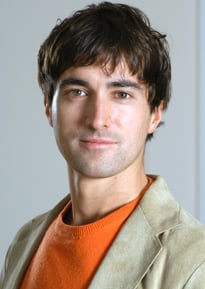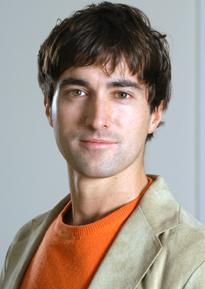On May 2 and 4, in Walnut Creek’s Lesher Center for the Arts, the California Symphony will present its season finale, a concert featuring Liszt’s Piano Concerto No. 1 and Tchaikovsky’s Pezza Capriccioso for cello and orchestra, both performed by the same 14-year-soloist, Sarina Zhang, on two different instruments. Also on the concert is a new piece by the Symphony’s composer in residence, Mason Bates.

Bates is a member of the Symphony’s Young Artist Composer in Residence program, which enabled him to work with the California Symphony and Music Director Barry Jekowsky for three years. “The program has been wonderful,” Mason says. “It’s great to have access to an orchestra of this caliber.”
Bates fondly remembers his earliest work for the program, Music From Underground Spaces, and clarifies that this concert will be quite different. “In Music From Underground Spaces, I used electronics integrated into the ensemble. I worked to make the low end of the orchestra sound like the motion of tectonic plates.” His Silicon Blues, premiering on May 2 and 4, is a very different animal.
“I wanted to write a piece,” he remarks, “that had a lot of the rhythms and sonic elements of my electronic music, but with it ‘unplugged’.” In this sense, Bates has used many electroniclike sounds, though they’re achieved naturally, using prepared piano, flutter-tonguing in the brass, or an old typewriter (to name a few examples). “In a sense, it’s very much aligned with my integration of electronic sounds and acoustic ones, just with fewer extension cords!” he continues.
Silicon Blues, which runs 13 minutes, begins with a section that the composer describes as having a “propulsive, sardonic, or slightly dry humor.” As the piece progresses, it moves into more lyrical material. “I love the journey of getting from one section to the next,” Bates says.
Barry Jekowsky, whose young composer residency program has nurtured a remarkable string of first-rank composers over its history (Jennifer Higdon, Christopher Theofanidis, Kevin Puts among them), is particularly effusive about Bates. “Even if he never wrote another note of music, he'd be one of the important composers of the 21st century,” he says.
“When I looked at the scores he submitted [for the program] what I found remarkable is the way he integrates the sound of the electronics. It was evident that here was a real composer who just happens to be interested in electronics.
“Then his popularity began to grow, but he came to me this year and said he wanted to experiment with the orchestra, to try to get at the sounds in his head without using electronics. And that fascinates me about Mason – it's his imagination. He's really taken advantage, in his time here, of the orchestra as laboratory."
Later this week, the Chicago Symphony, where Bates begins his next residency next fall, will perform his Music From Underground Spaces, which the California Symphony originally commissioned and premiered. His projects from here are very much a part of his life, even when he is thousands of miles away at another concert.
So check out the California Symphony and Jekowsky’s season finale. Silicon Blues will take you on a journey between the worlds of the acoustic and the electronic.

